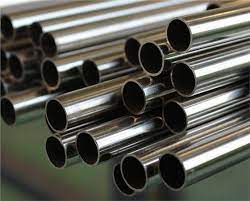316L stainless steel pipe is a kind of hollow long round steel, which is mainly used in industrial transportation pipelines such as petroleum, chemical industry, medical treatment, food, light industry, mechanical instrument, etc., as well as mechanical structural components. In addition, when the bending and torsional strength are the same, the weight is lighter, so it is also widely used in the manufacture of mechanical parts and engineering structures. It is also commonly used to produce various conventional weapons, barrels, shells, etc.

description
1.316L stainless steel has a maximum carbon content of 0.03 and can be used in applications where annealing after welding cannot be performed and where maximum corrosion resistance is required.
2.316 and 317 stainless steel (see the properties of 317 stainless steel below) are molybdenum-containing stainless steels.
3.The molybdenum content of 317 stainless steel is slightly higher than that of 316 stainless steel. Due to the molybdenum in the steel, the overall performance of this steel is better than that of 310 and 304 stainless steel. Under high temperature conditions, when the concentration of sulfuric acid is lower than 15% and higher than 85%, 316 stainless steel has a wide range of uses.
4.316 stainless steel also has good performance against chloride erosion, so it is usually used in marine environments.
5.Corrosion resistance
6. The corrosion resistance is better than 304 stainless steel, and it has good corrosion resistance in the production process of pulp and paper.
7.And 316 stainless steel is also resistant to erosion by marine and aggressive industrial atmospheres. Heat resistance In intermittent use below 1600 degrees and continuous use below 1700 degrees, 316 stainless steel has good oxidation resistance.
8.In the range of 800-1575 degrees, it is best not to use 316 stainless steel continuously, but when 316 stainless steel is used continuously outside this temperature range, the stainless steel has good heat resistance.
9. The carbide precipitation resistance of 316L stainless steel is better than that of 316 stainless steel, and the above temperature range can be used.
heat treatment
10.Annealed in the temperature range of 1850-2050 degrees, then rapidly annealed, and then rapidly cooled.
11.316 stainless steel cannot be hardened by overheating
12.Welding
13.316 stainless steel has good welding performance. All standard welding methods can be used for welding. According to the application, 316Cb, 316L or 309Cb stainless steel filler rods or electrodes can be used for welding. In order to obtain the best corrosion resistance, the welded section of 316 stainless steel needs to be post-weld annealed. Post weld annealing is not required if 316L stainless steel is used
14 Typical uses Pulp and paper equipment heat exchangers, dyeing equipment, film processing equipment, pipelines, exterior materials for buildings in coastal areas
Typical use
Most of the usage requirements are to maintain the original appearance of the building for a long time. When determining the type of stainless steel to choose, the main considerations are the required aesthetic standards, the corrosiveness of the local atmosphere, and the cleaning system to be used.
However, other applications increasingly seek only structural integrity or water impermeability. For example, roofs and side walls of industrial buildings. In these applications, the owner's construction cost may be more important than aesthetics, and the surface is not very clean.
430 stainless steel works reasonably well in dry indoor environments. However, to maintain its appearance outdoors in rural and urban areas, frequent cleaning is required. In heavily polluted industrial and coastal areas, the surface can be very dirty and even rust. However, for an aesthetic effect in an outdoor environment, nickel-containing stainless steel is required. Therefore, 304 stainless steel is widely used in curtain walls, side walls, roofs and other construction purposes, but in severely corrosive industrial or marine atmospheres, 316 stainless steel is preferred.
The advantages of using stainless steel in structural applications are well recognized. 304 and 316 stainless steels are included in several design guidelines. Because the "duplex" stainless steel 2205 combines good atmospheric corrosion resistance with high tensile and elastic strengths, this steel is also included in European guidelines
